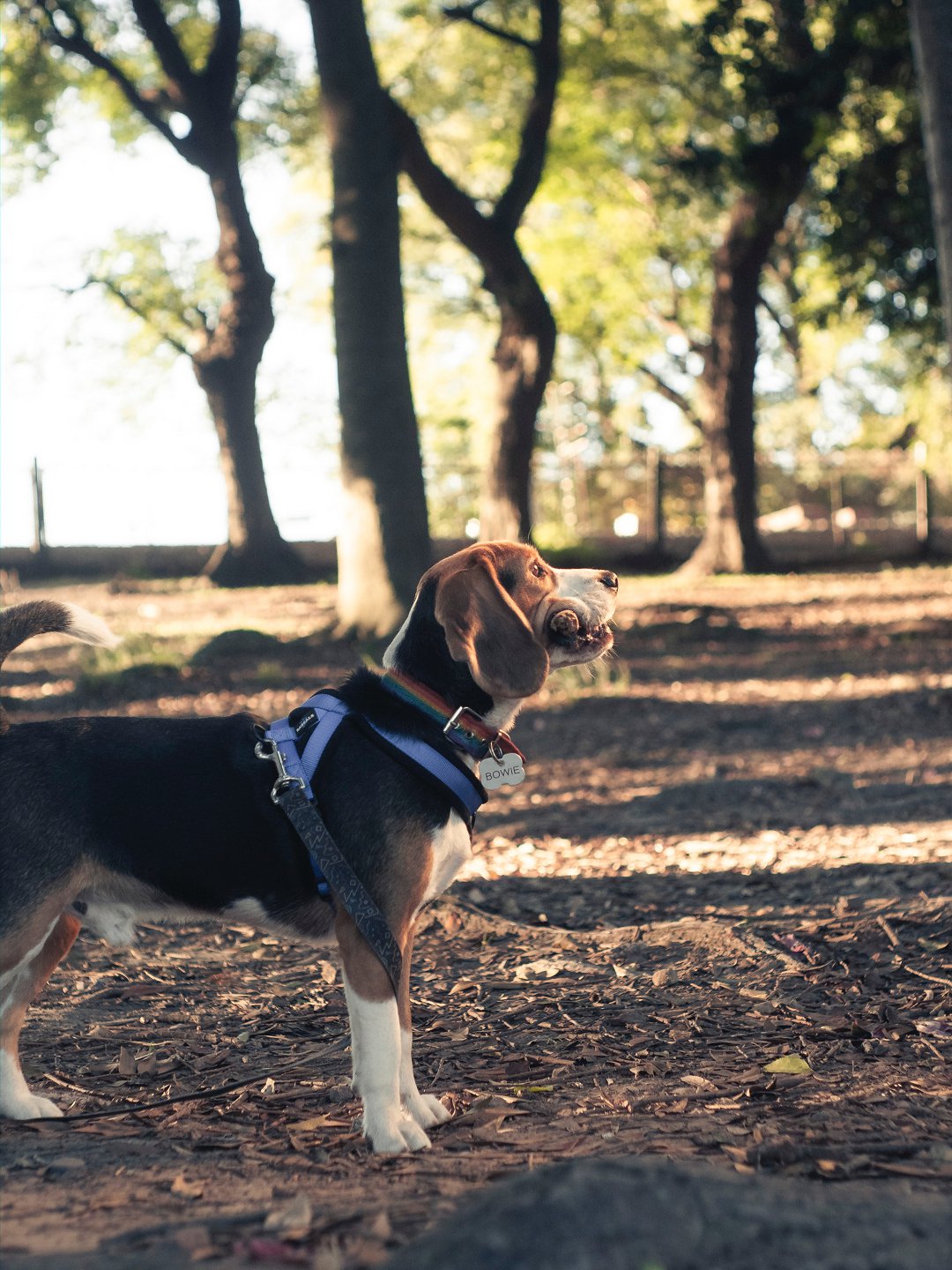Table of Contents
- 1 Introduction: Mastering the “Who’s Walking Who” Technique: Beagle Training Tips
- 2 Establishing Control and Leadership: Effective Beagle Training for Walks
- 3 Unleash the Potential: Expert Strategies for Training Beagles to Walk Obediently
- 4 FAQs About: “Who’s Walking Who Beagle Training”
- 4.1 How can I teach my Beagle to walk properly on a leash?
- 4.2 What should I do if my Beagle pulls on the leash during walks?
- 4.3 Are there any specific commands I should use during leash training?
- 4.4 How long should I walk my Beagle each day?
- 4.5 Can I use a retractable leash for Beagle training?
- 4.6 What if my Beagle is still struggling with leash training?
Introduction: Mastering the “Who’s Walking Who” Technique: Beagle Training Tips
Are you tired of feeling like your Beagle is the one in charge during walks? Do you find yourself being pulled in every direction, struggling to maintain control? If so, you’re not alone. Many Beagle owners face challenges when it comes to leash training and establishing obedience during walks. But fear not, because in this article, we will provide you with expert tips and strategies to help you master the “Who’s Walking Who” technique. By implementing these proven methods, you’ll be able to regain control, establish leadership, and enjoy peaceful and enjoyable walks with your Beagle. So let’s dive in and discover how you can transform your walks with your furry friend.
Establishing Control and Leadership: Effective Beagle Training for Walks
When it comes to beagle training, establishing control and leadership is essential, especially during walks. Beagles are known for their strong hunting instincts and can easily get distracted by scents and sounds. Without proper training, they can become notorious leash pullers, making walks a frustrating experience for both the dog owner and the dog itself. Here are some effective strategies to establish control and leadership during walks:
1. Use Positive Reinforcement Techniques
Positive reinforcement is a powerful tool in dog training, including leash training. Rewarding your beagle with treats, praise, or playtime when they exhibit good behavior on walks can encourage them to continue behaving well. For example, if your beagle walks calmly beside you without pulling on the leash, reward them with a treat and praise. This will reinforce the idea that walking politely on a leash is desirable behavior.
2. Teach Basic Obedience Commands
Teaching your beagle basic obedience commands like “sit,” “stay,” and “heel” can significantly improve their behavior during walks. By mastering these commands, you can easily regain control and redirect their attention when they start pulling on the leash or getting too excited. Practice these commands in a controlled environment first before incorporating them into your walks.
3. Use Proper Equipment
Using the right equipment is crucial for effective beagle training. A well-fitted harness or a head halter can provide you with more control over your beagle’s movements, making it easier to redirect their attention or prevent them from pulling on the leash. Avoid using choke or prong collars, as they can cause discomfort and potentially harm your beagle.
4. Start with Short Walks and Gradually Increase Duration
If your beagle is new to leash training or tends to pull excessively, start with short walks in a low-distraction environment. Gradually increase the duration and difficulty of the walks as your beagle becomes more comfortable and responsive to your commands. This progressive approach will help prevent your beagle from becoming overwhelmed and improve their leash walking skills over time.
By establishing control and leadership during walks, you can transform your beagle into a well-behaved walking companion. Remember to use positive reinforcement techniques, teach basic obedience commands, use proper equipment, and start with short walks to gradually build up their skills. With consistent training and patience, you’ll soon enjoy pleasant and stress-free walks with your beagle.
Now that you have learned effective strategies for establishing control and leadership during walks, it’s time to unleash the potential of your beagle with expert strategies for training them to walk obediently. Let’s dive into the next section and explore advanced techniques for mastering loose leash walking and overcoming common challenges.
Unleash the Potential: Expert Strategies for Training Beagles to Walk Obediently
When it comes to beagle training, one of the most important aspects is teaching them to walk obediently on a leash. This not only ensures their safety but also makes walks more enjoyable for both the dog and the owner. In this section, we will explore expert strategies that can help you master the “Who’s Walking Who” technique and train your beagle to walk obediently.
1. Start with leash training basics
Before you can expect your beagle to walk obediently on a leash, they need to understand the basics of leash training. Begin by introducing them to the concept of wearing a leash and collar, allowing them to get used to the feeling. Start with short, controlled walks in a quiet environment, gradually increasing the duration and difficulty as they become more comfortable.
2. Use positive reinforcement
Positive reinforcement is a powerful tool when it comes to beagle training. Reward your beagle with treats, praise, and affection whenever they exhibit the desired behavior of walking obediently on a leash. This will help them associate the behavior with positive outcomes and motivate them to repeat it.
3. Teach loose leash walking
One of the key goals of beagle training is to teach them to walk on a loose leash, without pulling or tugging. To achieve this, use the following techniques:
- Stop and go: Whenever your beagle starts pulling on the leash, stop walking and wait for them to stop pulling. Once they do, resume walking. This teaches them that pulling will not get them where they want to go.
- Change directions: If your beagle starts pulling in a particular direction, abruptly change directions. This will catch them off guard and make them pay attention to your movements.
- Use verbal cues: Teach your beagle specific verbal cues like “heel” or “easy” to signal them to walk calmly by your side. Consistently use these cues during walks to reinforce the behavior.
4. Provide mental and physical stimulation
Beagles are an energetic breed that requires both mental and physical stimulation. Before going on a walk, engage your beagle in activities that tire them out, such as playing fetch or puzzle toys. A tired beagle is more likely to walk obediently and less likely to engage in leash pulling or other unwanted behaviors.
5. Seek professional help if needed
If you’re struggling with beagle training or have specific concerns about leash pulling or obedience, don’t hesitate to seek help from a professional dog trainer. They can provide personalized guidance and techniques tailored to your beagle’s specific needs.
By implementing these expert strategies, you can unleash the potential of your beagle and train them to walk obediently on a leash. Remember to be patient, consistent, and always use positive reinforcement to reinforce good behavior. Happy walking!
FAQs About: “Who’s Walking Who Beagle Training”
How can I teach my Beagle to walk properly on a leash?
To teach your Beagle to walk properly on a leash, start by using positive reinforcement techniques. Reward your Beagle with treats or praise when they walk calmly beside you without pulling on the leash. Consistency and patience are key in this training process.
What should I do if my Beagle pulls on the leash during walks?
If your Beagle pulls on the leash during walks, it’s important not to yank or jerk the leash. Instead, stop walking and wait for your Beagle to calm down. Once they do, reward them and continue walking. This teaches your Beagle that pulling doesn’t lead to progress, but walking calmly does.
Are there any specific commands I should use during leash training?
Yes, using specific commands can be helpful during leash training. Start by teaching your Beagle the commands “heel” and “leave it.” “Heel” teaches them to walk beside you, while “leave it” helps redirect their attention from distractions. Consistency in using these commands will reinforce the desired behavior.
How long should I walk my Beagle each day?
Beagles are an active breed that requires regular exercise. Aim to walk your Beagle for at least 30 minutes to an hour each day. This not only helps them burn off energy but also keeps them mentally stimulated and prevents behavioral issues.
Can I use a retractable leash for Beagle training?
While retractable leashes can be convenient, they may not be the best choice for Beagle training. These leashes allow dogs to wander far ahead, potentially reinforcing pulling behavior. It’s recommended to use a standard leash initially for better control and gradually transition to a longer leash once your Beagle has mastered loose leash walking.
What if my Beagle is still struggling with leash training?
If your Beagle is still struggling with leash training, consider seeking help from a professional dog trainer. They can assess your Beagle’s behavior and provide personalized guidance to address any specific challenges. Remember, every dog learns at their own pace, so be patient and consistent in your training efforts.






Leave a Reply